The Volkswagen Passat has been busy recently, mostly because I’ve moved house.
This means the way I use the VW has changed in the short term. The most significant difference is that there’s no way I’m plugging an EV into the dodgy electrics in my new place. One mains socket melted when I was using a vacuum cleaner to clean out the Passat and another blew up my microwave, so for now I have a strict ‘one on, one off’ policy with appliances – and I’m not charging the car. The upshot is that I’ve gone from doing around 65% of driving on battery power to barely 25%.
I’ve also reversed what was becoming a rapid de gentrification of the interior. Following the move,the VW took on the role of builder’s van/skip, which didn’t bode well for its residual value. So I spent a couple of hours cleaning it out, which, apart from almost setting fire to my kitchen when I was vacuuming, highlighted just how robust the trim is. Most impressive was how easy it was to vacuum dust and bits out of the plush carpets. You’ll often find footwells lined with a scratchy, cheap material that holds dirt like Velcro, but not here. It came up like new – which, of course, it nearly is.
One feature that came in handy was the Dynamic Chassis Control suspension. I’ve long maintained that the firm Sport setting on these systems serves more use as a way of compensating for a heavy load, and so it proved with the boot loaded with 1125kg bags of sand and cement.
At the press of a button, the ‘slow motion accident’ body control and wallowy suspension were restored to a semblance of normality.
Another handy extra has been a set of roof bars. They’re VW-branded so they’re not cheap (£206), but they were a doddle to fit and are brilliant for carrying ladders, scaffolding planks and, soon, sheets of old asbestos. I’ll keep the sunroof closed for that trip to the dump.
VOLKSWAGEN PASSAT GTE ADVANCE DSG ESTATE
Price £39,770 (after £2500 gov’t grant) Price as tested £42,360 (after grant) Options Driver’s Assistance Pack Plus (including emergency assist intervention, dynamic light assist, lane assist, predictive pedestrian protection and traffic jam assist) £1225, Dynamic Chassis Control £725, metallic paint £595, rubber boot mat £45 Economy 60.9mpg Faults None Expenses None
PREVIOUS REPORTS:
I’m starting to think our Passat’s ‘St Tropez’ cream trim wasn’t such a bright idea. Keeping it clean is a full-time job, aided by a supply of Huggies baby wipes in the glovebox. Shoe scrapes on the door cubbies and finger marks on the door pulls are the biggest offenders. Hopefully I won’t have to deal with a five-year- old’s Ribena sick on the rear seat.
PREVIOUS REPORTS:
Interesting car, this. Interesting and complicated. You might recall that in my previous report I was scratching my head over how to accurately determine the Volkswagen Passat’s real-world economy.
We all know that official economy figures are to be taken with a pinch of salt. Or are they? VW claims 156.9mpg combined for the Passat GTE, which sounds real-world laughable, but I’ve already seen over 100mpg on the trip meter on my 36-mile, mostly motorway, part-urban commute.
The other day I did a five-mile local run almost entirely on battery power. The petrol engine chimed in of its own accord (I’m still not sure why) for barely half a minute, if that, so the trip meter calculated an average economy figure based on the amount of fuel used over the whole journey.
The result? It says we managed 237mpg. Except, of course, we didn’t, because if that were so the Passat’s 50-litre tank would have a 2610-mile range, which it doesn’t – unless all of your journeys are very short and your battery charges are regular. (Incidentally, I brimmed the tank with the trip meter telling me I had about 20 miles of petrol range left and it took 50.69 litres.)
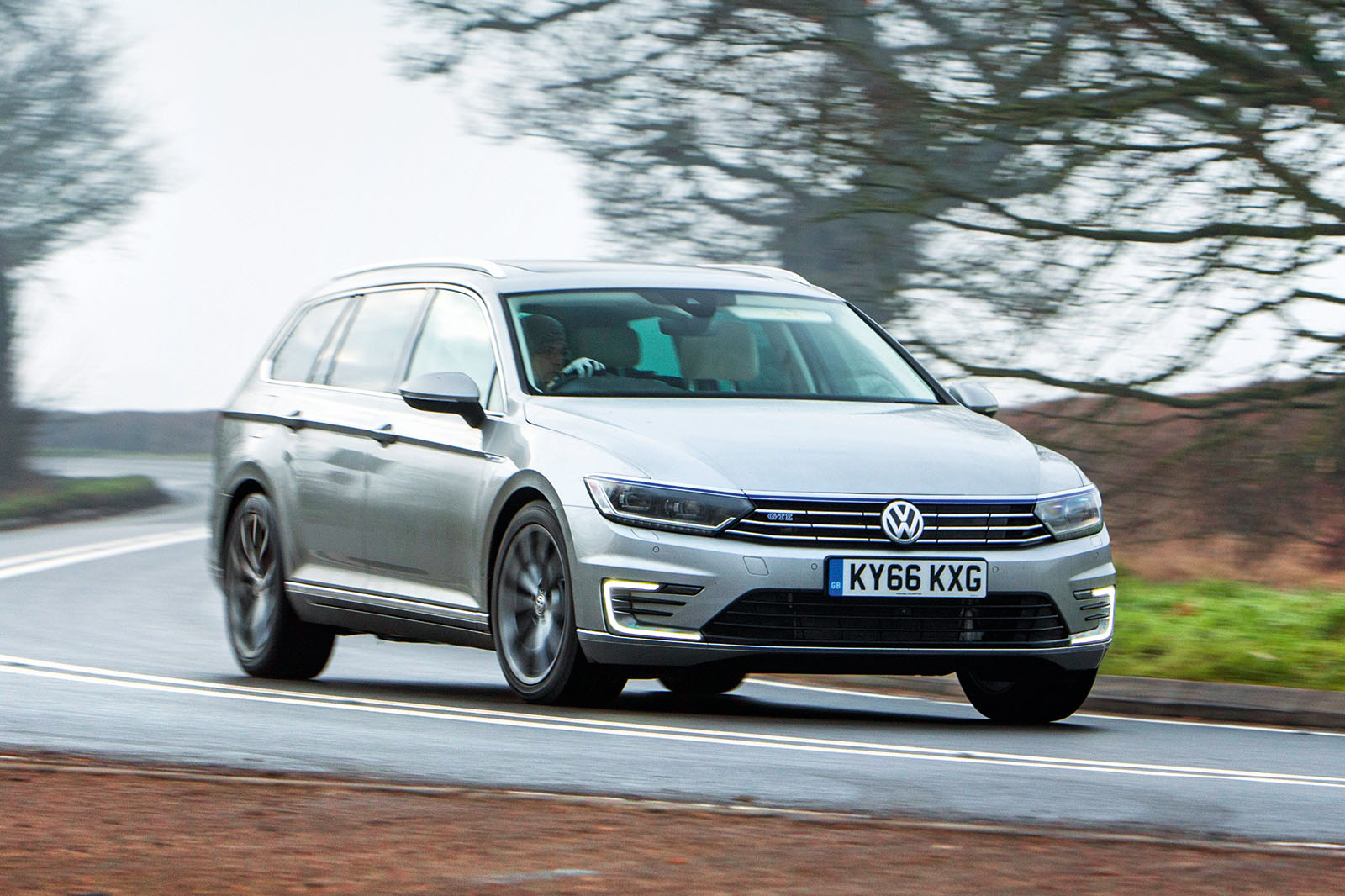
To cloud the issue further, VW claims a ‘total driving range’ of 664 miles, including 31 miles on electric power. If we subtract 31 from 664 and then divide the answer by the fuel tank capacity in gallons (11 of them), we get 57.5mpg. To be fair to VW, that’s a tacit acknowledgment that the official figure of 156.9mpg isn’t to be taken too seriously. But how is that figure measured? I don’t know.
For the time being, I’m going by what the trip meter claims is the car’s overall average economy, which is currently 64.5mpg (past experience tells me that VW Group trip meters aren’t too wide of the mark). I promise not to go on about fuel economy in my next report.
It took 1374 miles for me to realise I could toggle between the Passat GTE’s power sources with repeated presses of the E-Mode button next to the gear lever, rather than pressing it once, then selecting E-Mode or Hybrid via the touchscreen. What’s that you say? RTFM? No idea what you’re talking about. TIM DICKSON
VOLKSWAGEN PASSAT GTE ADVANCE DSG ESTATE
Price £39,770 (after £2500 gov’t grant) Price as tested £42,360 (after grant) Options Driver’s Assistance Pack Plus (including emergency assist intervention, dynamic light assist, lane assist, predictive pedestrian protection and traffic jam assist) £1225, Dynamic Chassis Control £725, metallic paint £595, rubber boot mat £45 Economy 60.9mpg Faults None Expenses None
PREVIOUS REPORTS:
We’re all for diversity around here. Among the current 30-odd cars on the fleet, we have a V-twin three-wheeler, a petrol V8, a tri-turbo diesel V8, a petrol W12, an EV, a parallel hybrid, two hydrogen fuel cell cars, a petrol-electric sports car and now this, the plug-in hybrid Volkswagen Passat GTE Estate.
Those last six cars are interesting because they represent a disproportionate 20% of Autocar’s long-termer lineup – disproportionate because for now the real-world percentage of alternatively fuelled vehicles on our nation’s roads is much lower.
Diversity, then, and pioneering the future of motoring – whatever that may turn out to be. And I suppose it’s worth asking if that future is going to be one in which the plug-in hybrid prevails, and it’s a question to which I hope to find an answer or, more likely, several answers, depending on your point of view. I already have a feeling, you see, that this car is going to cause some head-scratching.

We’re pretty well acquainted with the Passat GTE. We’ve already road tested it, albeit in saloon guise, and subjected it, as an estate, to a comparison test, and the car has scored a solid four stars on each occasion. This Passat uses the Volkswagen Group’s increasingly familiar petrol-electric set-up of a 1.4 TSI petrol engine, here making 154bhp, mated to a 113bhp electric motor and driving through a six-speed dual-clutch automatic gearbox. It’s good for 0-62mph in a claimed 7.6sec, which isn’t exactly slow.
The electric motor is powered by a 9.9kWh battery, which takes about two and half hours to fully charge via a wall box charger (at the office) or four and a half hours via a three-pin domestic plug (at my house). The battery lives under the rear seats and reduces fuel tank capacity from the 66 litres of a regular Passat to 50 litres.
You can have your Passat GTE in regular form, which comes quite well equipped, or in Advance trim, which is much more generous. We’ve gone for Advance, which includes VW’s Discover Navigation Pro with an 8.0in touchscreen, adaptive cruise control, emergency braking, a panoramic sunroof and a fully configurable 12.3in-wide TFT instrument display. To that, we’ve added metallic paint, Dynamic Chassis Control (DCC, or switchable suspension settings to you and me) and the tech-tastic Driver’s Assistance Pack. We’ve also got ‘St Tropez’ leather trim.
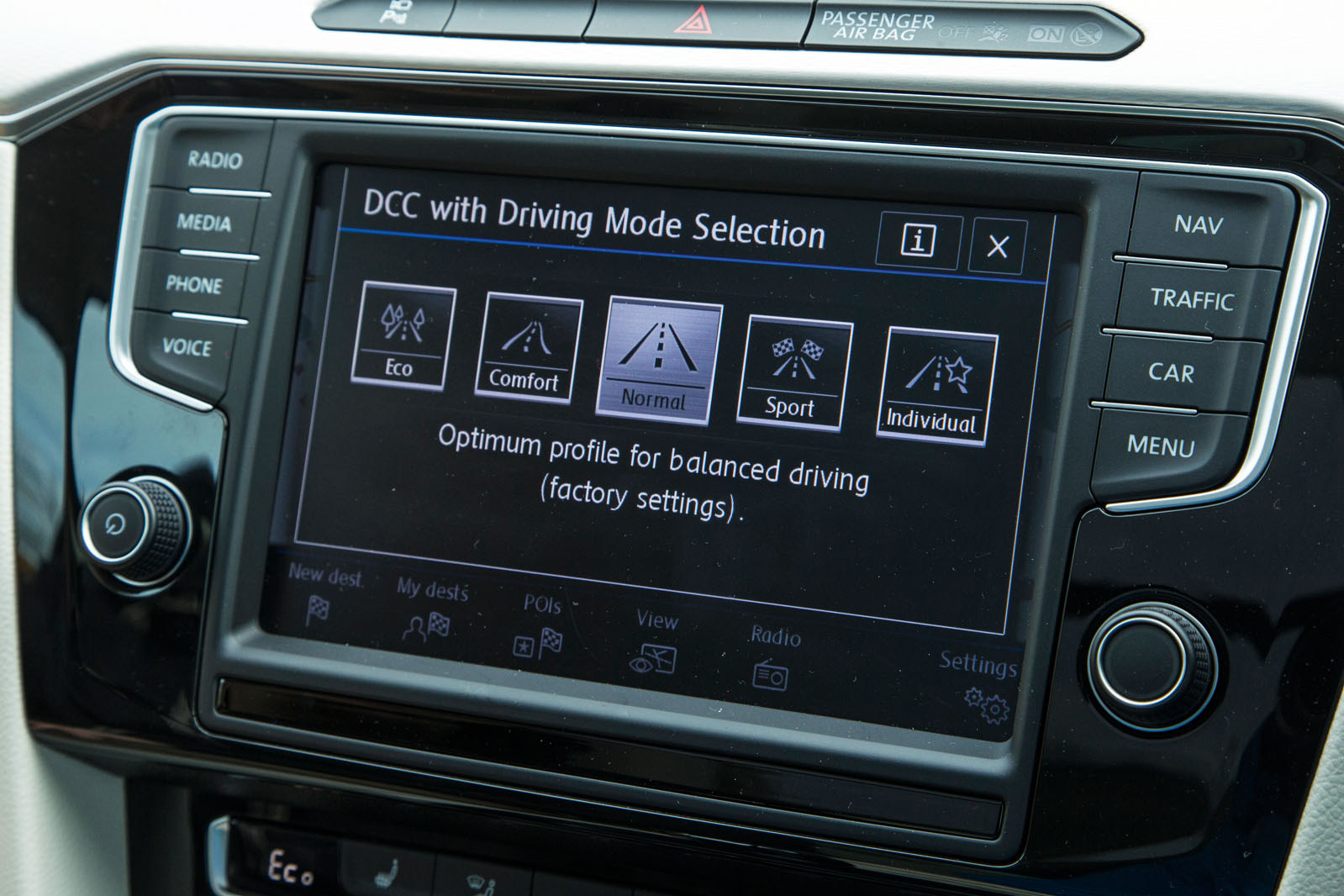
All of that means our car costs a hefty £44,860 before the government’s £2500 grant for plug-in cars. Even without the extras, an Advance-spec Passat GTE Estate costs in excess of £41k, which potential buyers will have to bear in mind given that it puts the car in the firing line of the impending new VED rules for cars costing £40,000 and above, due next month.
That running-cost can of worms aside, the Passat is living up to my earlier suspicions and posing as many questions as it is answering them. Why, for example, does the petrol engine sometimes come on when I don’t want it to, even at low speeds, in far from freezing temperatures, with a full battery and no air-con, heated seats or anything else switched on? Is there, meanwhile, a way of finding out the Passat’s total mileage on electric power for any given journey if I’m switching between power sources? Among all of the other information – and there’s a lot of it – that nugget isn’t in there.
But the thing that’s bugging me, and possibly you, the most is this: how economical is it? Specifically, how do I work out an accurate miles per gallon figure for the petrol engine? With any given journey being a mix of petrol and electric power, the traditional brim-to-brim calculation is corrupted by the fact that for some of the distance travelled no petrol was used.
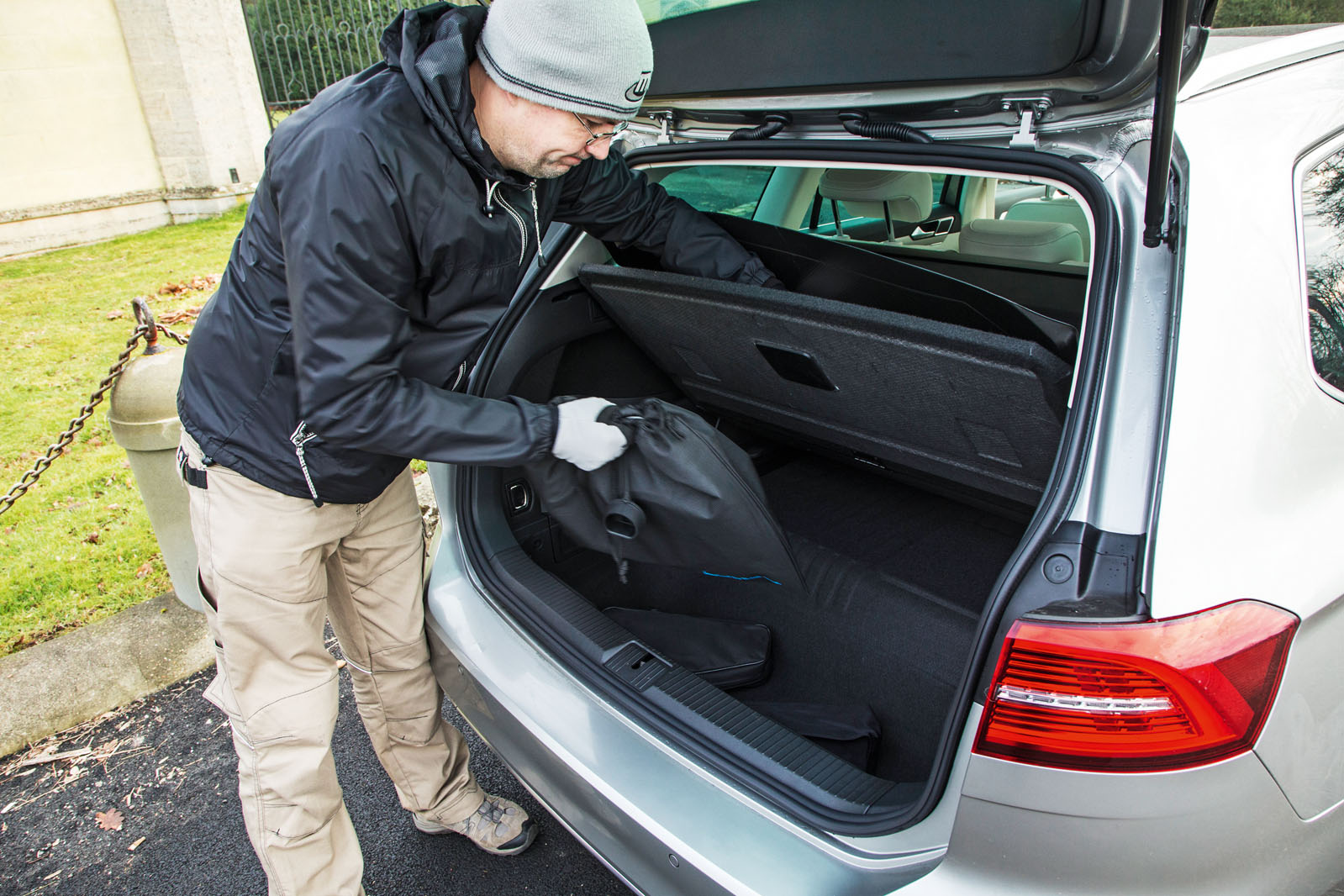
So on my 36-mile each-way commute, with a battery refill at each end, I’ve already been recording some pretty impressive figures – at least according to the trip meter. But the longer the journey (assuming it’s non-stop), the less impressive the average economy figure for that journey, because the petrol engine does proportionally more of the work as the miles go up.
I could, of course, just drive around with an empty battery and work out the fuel economy that way, but to do so would utterly miss the point of having a hybrid powertrain in the first place and in no way reflect how I use the car.
In the meantime, I’m relying on the trip meter’s claimed overall average figure, which right now is 60.9mpg. That’s reasonably impressive, but all of my journeys so far have had some sort of electrical assistance, and I’m trying hard to optimise the free (or at least significantly cheaper) propulsion to best effect, which I’ve been doing by using electric power to get up to speed and then switching to petrol once I’m maintaining a relatively constant velocity.
If nothing else, I’m going to have a lot to write about in terms of economy, efficiency and running costs. You’ll have to stop me if it gets boring (if you’re not there already). Still, this is a big, practical car with a huge boot and lots of kit, so I’ll be finding out how useful and usable much or all of that is. Stand by to be riveted.
VOLKSWAGEN PASSAT GTE ADVANCE DSG ESTATE
Price £39,770 (after £2500 gov’t grant) Price as tested £42,360 (after grant) Options Driver’s Assistance Pack Plus (including emergency assist intervention, dynamic light assist, lane assist, predictive pedestrian protection and traffic jam assist) £1225, Dynamic Chassis Control £725, metallic paint £595, rubber boot mat £45 Economy 60.9mpg Faults None Expenses None


























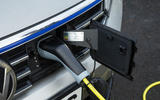



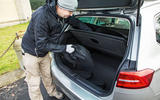


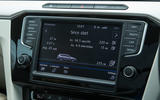
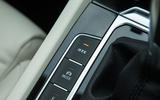

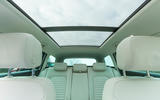




Join the debate
Add your comment
Hmmm...
Remaining electric range is constantly displayed in kilometers at the bottom of the speedometer screen i my Passat GTE Sportswagon, so that point is hard to understand.
There is also a statistics display in the trip computer that will give you the gas usage/electricity usage in % for the last trip, current day and longterm average if you are interested.
I suspect the confusion around mpg is a theatrical thing to make the text more exiting or something - In reality, there is no confusion: No gas while the battery lasts, about 7 liters per 100km / 41mpg when the battery is depleted.
The official mpg-figure is of course the result of the outcome of the EU’s (controversial) standardized test cycle, which today allows plug-in hybrids like this one to complete most of it on battery, resulting in a very high number. Of course this figure has no relevance to long-range cruising, but if your commute is just 18 miles like my wifes, and if you also also have a charge spot at work like she does, most days gas usage is actually zero.
The “mysterious” engine startups when the battery is not depleted are usually due to either low or high battery temperature - eg. When the battery is cold after the car being stationary in cold temperature without using the timer activated prep heating before driving off, current capacity is limited and relatively easy driving can push the battery to its current limit. The car then displays the crossed out E symbol on the top of the speedometer display and switches to hybrid mode. When the crossed out E disappears after a few minutes, you can activate pure electric mode again. The same thing happens if you push the car hard: for instance repeated 0-140km/h full throttle runs in e-mode will create a lot of heat in the battery and the crossed out E comes on and hybrid mode is activated until the battery cooling system has brought temps down to normal again.
None of this seems all that mysterious to me, but then I’m an engineer :-)
How much?
i am hoping that the load was 11x25kg bags not 1125 kg, which would be over the payload limit for a discovery, let alone a Passat
PHEV
What's the point of reviewing a PHEV if it's not going to be plugged in? Daft.